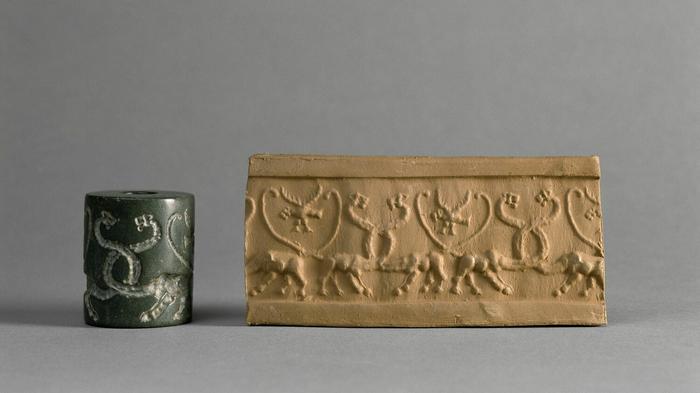Summary: University of Bologna researchers have discovered direct links between 6,000-year-old cylinder seal designs and early writing systems in ancient Mesopotamia. Their groundbreaking study reveals how accounting practices using decorated cylinders evolved into proto-cuneiform script, offering new insights into humanity’s transition from prehistory to written history.
Journal: Antiquity, November 5, 2024, DOI: 10.15184/aqy.2024.165 | Reading time: 4 minutes
The invention of writing stands as one of humanity’s most profound achievements, marking our transition from prehistory to recorded history. Now, researchers have uncovered new evidence about how this momentous development occurred in ancient Mesopotamia.
From Cylinder Seals to Written Words
In a groundbreaking study published in Antiquity, researchers from the University of Bologna have identified crucial connections between ancient cylinder seals and the earliest known writing system. These cylinders, dating back approximately 6,000 years, were used to imprint designs onto clay tablets.
“The conceptual leap from pre-writing symbolism to writing is a significant development in human cognitive technologies,” explains Silvia Ferrara, professor in the Department of Classical Philology and Italian Studies at the University of Bologna and lead researcher. “The invention of writing marks the transition between prehistory and history, and the findings of this study bridge this divide by illustrating how some late prehistoric images were incorporated into one of the earliest invented writing systems.”
The Ancient Accounting Connection
The story centers on Uruk, one of Mesopotamia’s earliest cities, located in what is now southern Iraq. During the fourth millennium BCE, this influential center developed a sophisticated system for tracking goods and commerce.
The cylinder seals, typically crafted from stone and engraved with intricate designs, played a crucial role in this ancient accounting system. By the mid-fourth millennium BCE, merchants and administrators used these seals to monitor the production, storage, and movement of various goods, particularly agricultural products and textiles.
Breaking New Ground
“The close relationship between ancient sealing and the invention of writing in southwest Asia has long been recognised, but the relationship between specific seal images and sign shapes has hardly been explored,” says Ferrara. The research team’s systematic comparison of cylinder designs with proto-cuneiform signs has revealed direct connections in both form and meaning.
Perhaps most intriguingly, the study focuses on seal imagery that predated writing while continuing to evolve alongside it. The researchers discovered a series of designs specifically related to textile and pottery transport, which later transformed into corresponding proto-cuneiform signs.
Future Implications
These findings open new avenues for understanding both ancient cylinder seals and proto-cuneiform writing, of which more than half remains undeciphered. “Our findings demonstrate that the designs engraved on cylinder seals are directly connected to the development of proto-cuneiform in southern Iraq,” confirms Ferrara. “They also show how the meaning originally associated with these designs was integrated into a writing system.”
Glossary:
– Proto-cuneiform: An archaic form of writing using pictographic signs, developed in ancient Mesopotamia
– Cylinder seals: Stone cylinders engraved with designs used for marking clay tablets
– Mesopotamia: Ancient region between the Tigris and Euphrates rivers, in modern-day Iraq
– Pictographic: Writing that uses picture symbols to convey meaning
Quiz:
1. Where was the ancient city of Uruk located?
Answer: In what is now southern Iraq
2. What was the primary use of cylinder seals in ancient Mesopotamia?
Answer: They were used as part of an accounting system to track the production, storage, and transport of consumer goods
3. Approximately how old are the cylinder seals studied in this research?
Answer: Around 6,000 years old
4. What percentage of proto-cuneiform signs remain undeciphered today?
Answer: More than half
Enjoy this story? Get our newsletter!
If our reporting has informed or inspired you, please consider making a donation. Every contribution, no matter the size, empowers us to continue delivering accurate, engaging, and trustworthy science and medical news. Independent journalism requires time, effort, and resources—your support ensures we can keep uncovering the stories that matter most to you.
Join us in making knowledge accessible and impactful. Thank you for standing with us!

